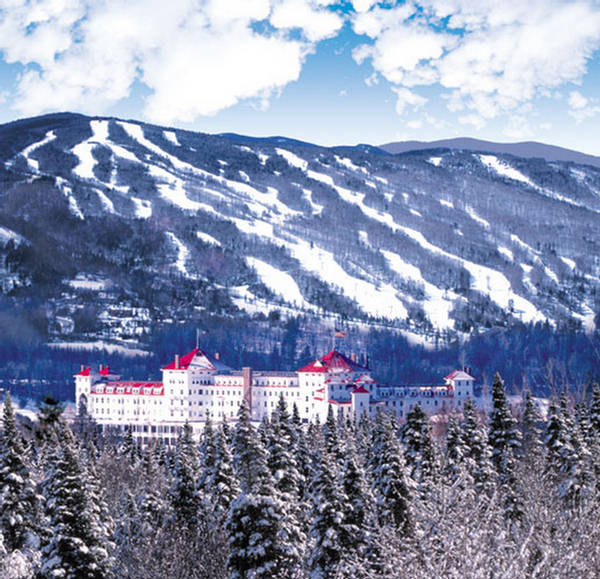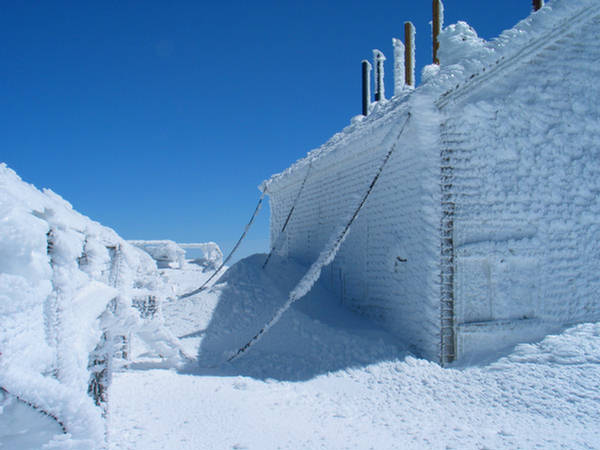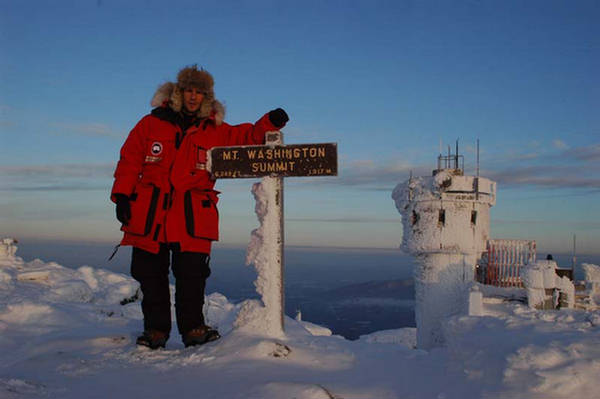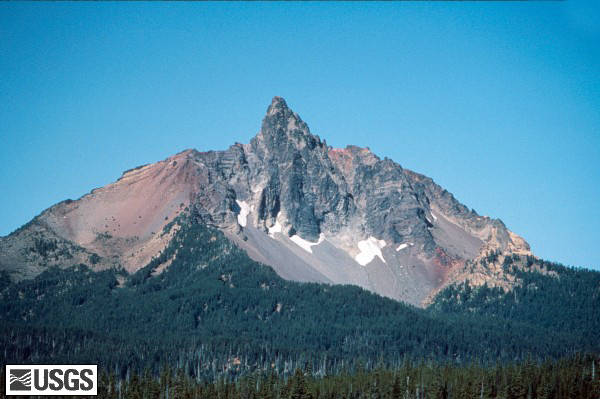Mount Washington is the highest peak in the Northeastern United States at 6,288 ft (1,917 m). It is famous for its dangerously erratic weather, holding the record for the highest wind gust directly measured at the Earth's surface, at 231 mph (372 km/h) on the afternoon of April 12, 1934. It was known as Agiocochook, or "home of the Great Spirit", before European settlers arrived.[4]

The mountain is located in the Presidential Range of the White Mountains, in Coos County, New Hampshire. It is the third highest state high point in the eastern U.S. and the most prominent peak in the Eastern United States.
While nearly the whole mountain is in the White Mountain National Forest, an area of 59 acres (0.24 km2) surrounding and including the summit is occupied by Mount Washington State Park.

The mountain was first reported by Giovanni da Verrazzano in 1524, from the Atlantic Ocean, as "high interior mountains". Darby Field claimed to have made the first ascent of Mt. Washington in 1642.[5] A geology party, headed by Dr. Cutler, named the mountain in 1784.[6] The Crawford Path, the oldest mountain hiking trail in America, was laid out in 1819 as a bridle path from Crawford Notch to the summit and has been in use ever since. Ethan Allen Crawford built a house on the summit in 1821, which lasted until a storm in 1826.[6]


Little activity occurred on the summit itself until the middle of the 19th century when it was developed as one of the first intentional tourist destinations in the country, with the construction of more bridle paths and several summit hotels. The Summit House opened in 1852, burned in 1908 and was replaced in 1915. [6] The Tip Top House (1853), which is still standing, was recently renovated as a historical exhibit. Other tourist construction in the 19th century included a stagecoach road (1861)—now the Mount Washington Auto Road—and the Mount Washington Cog Railway (1869), both of which are still used. For forty years an intermittent daily newspaper, called Among The Clouds, was published by Henry M. Burt at the summit each summer, until 1917. Copies were circulated via the Cog Railway and coaches to surrounding hotels and other outlets


